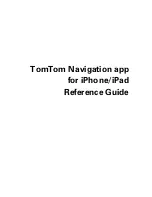
Loran TD
Position Format
2
9940
(M)
9940 (W)
9940 (X)
9940 (Y)
9940
(M)
9940 (W)
9940 (X)
9940 (Y)
9610 (V)
9610
(W)
9610 (X)
9610 (Y)
9610 (Z)
8970 (X)
8970
(M)
8970 (Y)
8970 (W)
8970 (Z)
9960 (Z)
9960 (Y)
9960 (W)
9960 (X)
9960
(M)
Loran C is a radio navigation system, operated and maintained
in the United States by the Untied States Coast Guard. The name
Loran is an acronym for ‘
LO
ng
RA
nge
N
avigation’.
The Loran C system covers the entire United States and the U.S.
Coastal Confluence Zone. From a mariner’s perspective, the Loran C
system is used primarily for ocean and coastal navigation. It can be
used as a supplemental system for harbor and harbor
approach navigation, and for inland navigation by
recreational vehicles. Loran C will be phased out as a
primary source of navigation, but should remain active
until after the turn of the century. It will be replaced by
GPS. The Global Positioning System provides greater
accuracy and world wide coverage.
The Loran C system consists of groups of land based
transmitter stations called chains. A chain contains a Master
station (M) and at least two, but more commonly 4 or 5 Second-
ary stations designated (V) Victor, (W) Whiskey, (X) Xray, (Y) Yankee,
and (Z) Zulu. These stations are separated by several hundred miles.
Many of the Loran C transmitter stations serve multiple roles.
A transmitter can serve as a Master Station for one chain and a
secondary station for multiple chains. An example would be chain
9610’s Master Station and chain 8970’s Zulu Station. These operate
from the same transmitter located in Boise City, OK.
9610 Master Station and 8970 (Z) Zulu
Station share a common transmitter.
Loran C.p65
12/21/99, 10:08 AM
2





























